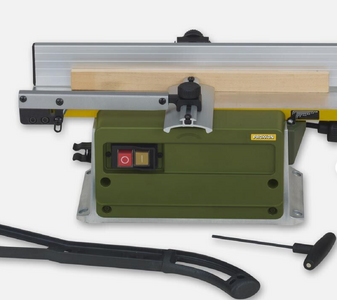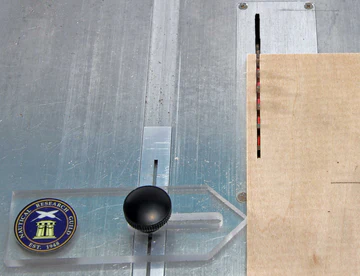I presently rip using my band saw to get the general size and then use a Brynes sander for the finished dimension. This has worked but is very time consuming, creates tremendous dust, and is hard on the sanding media. So a planer that would allow me to make sheets that then could be but into .8mm or thicker strips would be ideal.
Perhaps I misunderstand your description, but it appears to me that you are "doing it the hard way." Am I correct that you are resawing on a band saw and then thickness-sanding the re-sawn pieces into .8mm or thicker
strips from the flat .8mm thick sheet? If so, you might consider resawing a flat plank with a thickness of the
width of the strips you wish obtain, and simply saw off strips of the
thickness you desire. With a thin-kerfed slotting saw blade, as on the Byrnes saw, sawing your strips off the
edge of a plank rather than off the
face of a thickness-sanded sheet should be a lot faster and produce a lot less sawdust.
I have a 14" wide free-standing Rockwell/Delta thickness planer which is rather larger and more powerful than the "bench-top" or "lunch box" thickness planers that are popular these days, so I may not be the best authority on the subject, but if my experience with my 14" thickness planer is any indication, I think that obtaining a thin sheet out of a planer at the sizes and tolerances customary in ship modeling is probably expecting too much of planers designed to mill softwoods to much greater thicknesses. At best, success in working with smaller pieces of wood might be had by attaching the piece to a much larger plank with two-sided tape in order to obtain an even feed through the planer.








